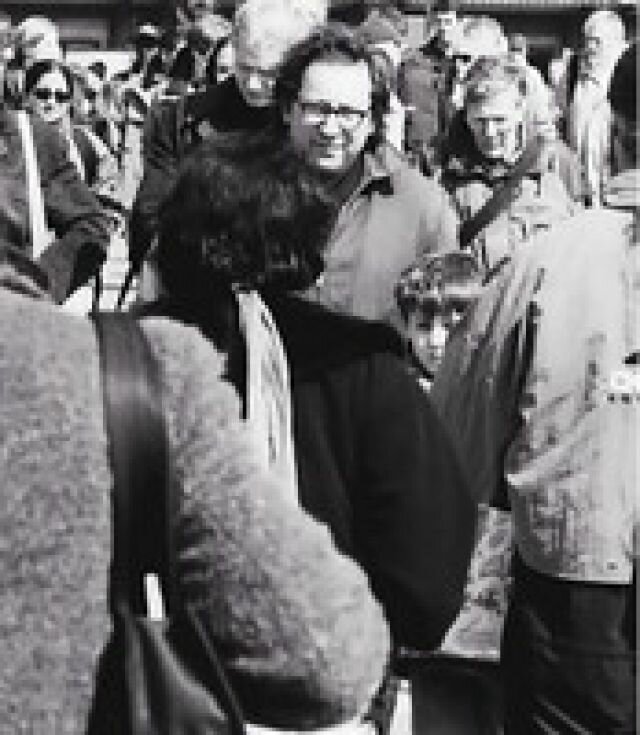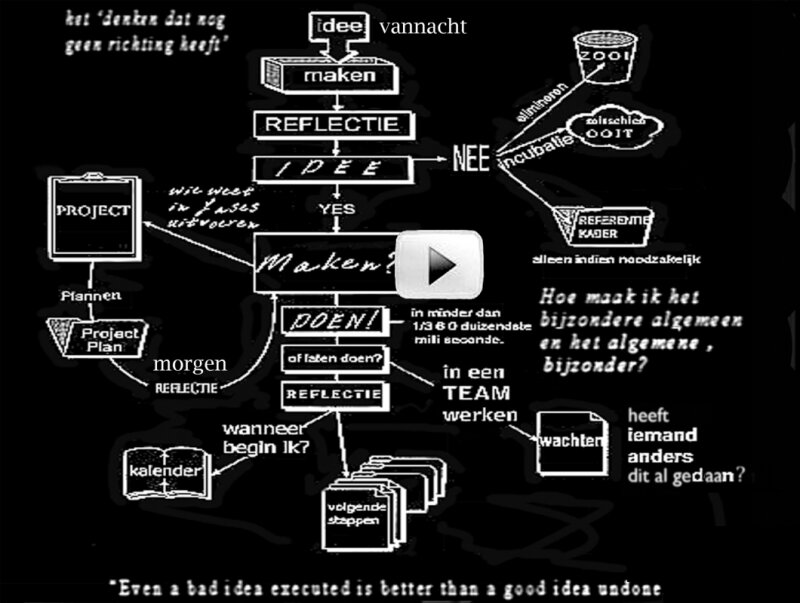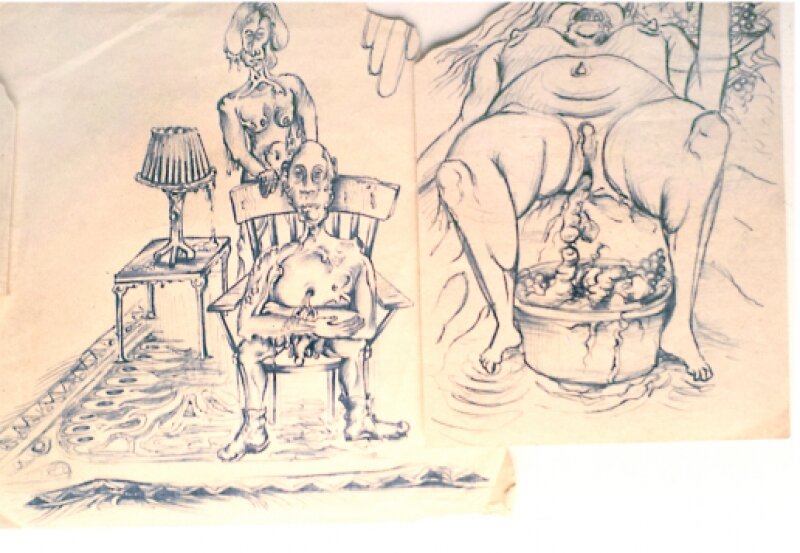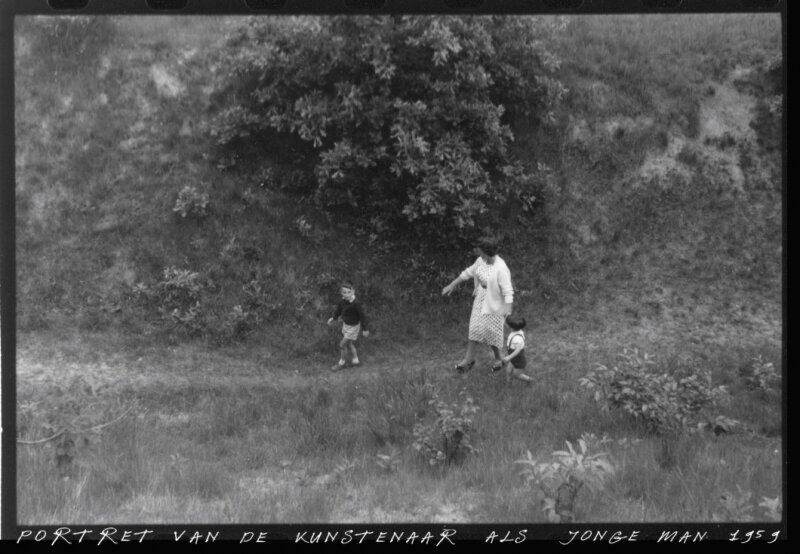
Robert Klatser is artist and teacher and researcher teacher at the Amsterdam School of Art.
1000 Things is a subjective encyclopedia of inspirational ideas, things, people, and events.
Read the most recent articles, or mail the to contribute.

Robert Klatser is artist and teacher and researcher teacher at the Amsterdam School of Art.

“That which is creative, creates itself” – John Keats
Nothing remains unsaid at schools; everything is up for discussion. The child’s right to cherish his secrets is denied him. There doesn’t seem to be a place for daydreams, fantasies, or repression. Every minute of a child’s life must be meaningful. But children want to play and experiment without pretension. They should be allowed to form images and thoughts that manifest themselves within the hidden corners of the mind, far away and out of sight from others.
My life is given form by the countless images that impose themselves on me every three hundredth millisecond. The distance between the conscious and the unconscious seems minimal. Useless thoughts dominate my brain and link together to create a chain of countless, fleeting thoughts. Every action and all behaviour are preceded by fictional plans and fantastic imaginations.
My ability to make exceptional drawings was recognized early at kindergarten. Were parents and teachers competent to recognize ability? On the grounds of what criteria were my drawings assessed? When I analyse them, I notice realism, detail, and intensity. The sense of imagination is not strikingly idiosyncratic or expressive. The use of colours seems realistic. The images were related to trips and outings I’d made, as well as creatures like garden gnomes and fantastical animals. Goblins. The challenge was to portray these imaginary images as perfectly as possible. Kids don’t strive for expressiveness. Only adults appreciate the visible struggle of creation or the painter’s movements coagulated in paint upon the canvas.
My talent had little to do with the characteristics that would be important for a future artistic practice.
At primary school I endlessly drew mice with human features, top secret flying, driving, and diving survival cars; and even historical events made their appearance, like the beheading of van Oldebarneveld. Many artists say that they’ve felt like an outsider and an observer since childhood, and to have a greater sensitivity to their surroundings.
Teachers interpreted the bloody drawing as expressions of mental illness or family issues. By doing so, they made an implicit connection between artistic quality and mental abnormality. I had an undeniable urge to shock. Bloody, scary scenes lent themselves well for this. It isn’t only admiration that stimulates the need to create, a negative response likewise stimulates this need; I’ll show them! The feeling of being an outcast energised me.
When I was twelve, I had a teacher sporting a bow tie who presented himself as an artist. He created an inspiring environment by being a role model, observer, dreamer and rebel. The point of departure is what formed the student’s ideas, while constantly referring to art and artistry. He had faith in the idea of the student. It was this attitude that also drew students to him who had little to no interest in art. He was very conscientious, delayed his judgement and was constantly alert. The students believed in his honesty. Without being aware of it, he was a forerunner in what now would be called authentic teaching.
Still, I was seen as a talented student. That implies a promise that had simply to be fulfilled. At this point, heading to the academy seemed self-evident.
The promise remains. But the longer it stands, the less likely it is that it will be realized. As time goes by, personal identity becomes entwined with the identity of the artist. This makes quitting impossible. With Bourdieu in mind, being an artist is like a coat that I can’t take off, for if I do, I’d be naked.

Robert Klatser, circa 1967
“That which is creative, creates itself” – John Keats
Nothing remains unsaid at schools; everything is up for discussion. The child’s right to cherish his secrets is denied him. There doesn’t seem to be a place for daydreams, fantasies, or repression. Every minute of a child’s life must be meaningful. But children want to play and experiment without pretension. They should be allowed to form images and thoughts that manifest themselves within the hidden corners of the mind, far away and out of sight from others.
I live by the grace of the countless images that impose themselves upon me every three hundredth millisecond. The distance between the conscious and the unconscious seems minimal. Useless thoughts dominate my brain and link together to create a chain of countless, fleeting thoughts. Every action and all behaviour are preceded by fictional plans and fantastic imaginations.
My ability to make exceptional drawings was recognized early at kindergarten. Were parents and teachers competent to recognize ability? On the grounds of what criteria were my drawings assessed? When I analyse them, I notice realism, detail, and intensity. The sense of imagination is not strikingly idiosyncratic or expressive. The use of colours seems realistic. The images were related to trips and outings I’d made, as well as creatures like garden gnomes and fantastical animals. Goblins. The challenge was to portray these imaginary images as perfectly as possible. Kids don’t strive for expressionism. Only adults appreciate the visible struggle of creation or the painter’s movements coagulated in paint upon the canvas.
My talent had little to do with the characteristics that would be important for a future artistic practice.
At primary school I endlessly drew mice with human features, top secret flying, driving, and diving survival cars; and even historical events made their appearance, like the beheading of van Oldebarneveld. Many artists say that they’ve felt like an outsider and an observer since childhood, and to have a greater sensitivity to their surroundings.
Teachers interpreted the bloody drawings as expressions of mental illness or family issues. By doing so, they made an implicit connection between artistic quality and mental abnormality. I had an undeniable urge to shock. Bloody, scary scenes lent themselves well for this. It isn’t only admiration that stimulates the need to create, a negative response likewise stimulates this need; I’ll show them! The feeling of being an outcast energised me.
When I was twelve, I had a teacher sporting a bow tie who presented himself as an artist. He created an inspiring environment by being a role model, observer, dreamer and rebel. The point of departure is what formed the student’s ideas, while constantly referring to art and artistry. He had faith in the idea of the student. It was this attitude that also drew students to him who had little to no interest in art. He was very conscientious, delayed his judgement and was constantly alert. The students believed in his honesty. Without being aware of it, he was a forerunner in what now would be called authentic teaching.
Still, I was seen as a talented student. That implies a promise that had simply to be fulfilled. At this point, heading to the academy seemed self-evident.
The promise remains. But the longer it stands, the less likely it is that it will be realized. As time goes by, personal identity becomes entwined with the identity of the artist. This makes quitting impossible. With Bourdieu in mind, being an artist is like a coat that I can’t take off, for if I do, I’d be naked.

Portret van de kunstenaar als jonge man, 1959
Art’s main point of origin is no longer restricted to the solitude of a lonely studio. Instead, it is created through dialogue with others, whether or not they are physically present. Interactive elements form important aspects of the work. Originality and eternal value, so inherently characteristic of modern art, no longer hold the same importance. What does retain its gravity is what can be conjectured to be a deep seated need for immortality and the perpetual need for the self affirmative: ‘I exist!
Access to media and technical possibilities has democratised art even further. Every individual can easily express himself and make himself heard. In a similar fashion, the masses were able to make themselves seen through photography and film at the beginning of the last century. People will always want to leave a trace, no matter how trivial. One could interpret this need as the constant reshaping of identity. What they think and do takes a temporary form in the constant confrontation with the other. It’s this need that has become a basic necessity for the young today.
Internet and the mobile phone are very suitable as artistic devices. Especially the mobile phone allows us to exist in multiple contexts, or “thanks to the specific characteristic of it’s medium, mobile telecommunication disrupts typical narrative elements such as [unity] of space (setting) and linear casuality in time (plot) in addition to the image of a consistent, thoughtful character (unicity).’ Also, ‘people are exceptionally fascinated by experiences and non-rational, magical moments that they often consciously seek out’.
They are especially capable of sharing their own story—narrative, auditory, and visual—in relationship to others across the world.
Looking at artists’ work process, the exchange of image and narrative does not necessarily need to take form outside the virtual space in a desperate attempt to materialize. The temporary and imperfect character of art, especially in relationship to interaction and transition, is represented in Japanese with the term “wabi sabi.” This term expresses the relationship between beauty and transience. Leonard Koren explains wabi sabi as ‘a beauty of things imperfect, impermanent, and incomplete.’ The artist increasingly makes use of fleeting images that, through media, are globally transmitted and progressively refer to a common frame of reference.
The work is no longer a representation of the artist’s living environment. The origin and starting point of the work lies within that or, better yet, it becomes part of it. It finds a place on the Internet and in the environment, the society, and in thinking. And once again, the artwork is no longer about mass communication or about interculturality. It is about articulation, confrontation, and the invention of shared stories without a set goal.
Nicolas Bourriaud typifies contemporary art as the arena of exchange: the virtual platform of exchange that the artist, too, is a part of. Because artists utilise an artistic form in lieu of the every day form, the every day becomes extraordinary and the extraordinary becomes every day. The traces, or memories, that their work leaves behind evidences their capability to be temporarily part of that culture in a virtual (or non-virtual) place at a specific moment.